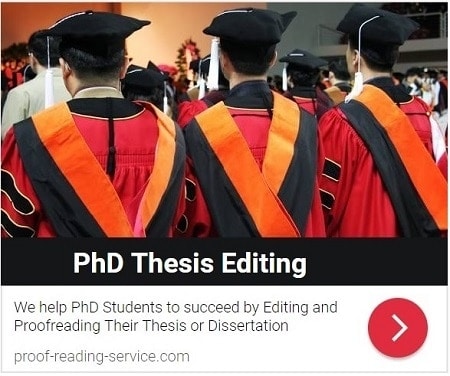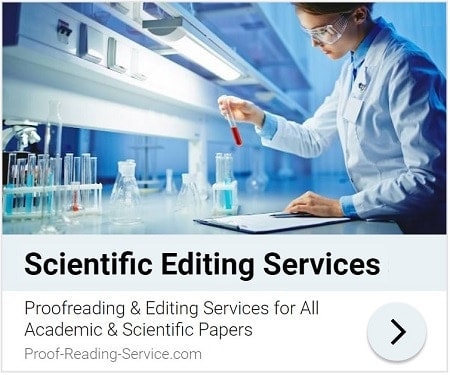
Table of Contents (Guide To Publication)
Part III: Communicating with Journal Editors: Submission, Acceptance, Revision and Rejection – Chapter 6
6. First Things First: Earning the Interest and Respect of an Academic or Scientific Editor
Impressing an academic or scientific editor in all the right ways is not an easy task. Even after you’ve considered all the aspects discussed above of designing, writing and presenting a top-notch scholarly paper for an appropriate and respected academic or scientific journal, you will need to invest a fair amount of time and effort into writing an eloquent covering letter that highlights both the unique achievements of your work and its relevance and topicality for the journal, preparing the initial elements of your article – title, abstract and keywords – with special (some might say obsessive) care and submitting your paper exactly as the journal indicates. Remember that you need to capture the attention of someone who is inundated with papers, abstracts and letters each and every day and whose job depends on making decisions that lead to the successful publication of quality scholarship. Think of that editor as a person desperately seeking a reason to reject rather than accept the work that crosses his or her desk, and the first impressions your writing makes as your initial line of defence: you need to convince that overworked editor that it would be a mistake not to consider your paper seriously, and ideally persuade him or her that your work will not only fit the journal’s publishing agenda but stand out as exceptional among the many papers it publishes each year.
6.1 Covering Letters: First Impressions
Although not all academic and scientific journals require a covering letter these days, many do and others will allow you to send one either as a separate document or as the first page of your paper. If the journal’s guidelines offer you even the smallest opportunity to include a covering letter with your submission (or even if they don’t suggest that you can’t), send one, and while it’s not a good idea to irritate an editor with a covering letter that’s not wanted, even a brief (and beautifully written) paragraph or two in an email message will serve. A covering letter allows you to address the journal’s editor directly and explain exactly what your work is, any aspects of it that are unique and important and the ways in which it is relevant to the journal’s publishing agenda. As well as being informative, a covering letter is a sample of your writing, your persuasive skills and your professional perspective. It can make or break an article submission by either encouraging the editor to take a serious look at the paper itself or convincing him or her that there’s no point in reading further.
It goes without saying that the language in which a covering letter is written should be correct in every way and a pleasure to read. A covering letter is not the place for grammatical or orthographic errors, awkward constructions, sloppy sentence structure or vague vocabulary. Avoid abbreviations and detailed data, and be sure to use terminology that is appropriate to the journal’s focuses, keeping in mind both its range and specialisation. You want to let your reader know that you are an expert in your field and familiar with the terms and methods used in the research areas covered by the journal, but you don’t want to lose that reader: remember that the editor making the initial decision as to whether your paper is worth serious consideration or not will know a great deal about the topics covered by the journal and have a very good idea of the kind of papers the journal is looking for, but may not be a specialist in your area. There was a time when most submission editors were experts in the topics of the papers they considered for publication, and with some publishers this is still the case, but it’s rarer nowadays and often your paper won’t pass under the eyes of specialists unless it makes it over the first hurdle and is sent on for peer review.
It can helpful both for you and for the editor if you suggest in your letter (or in your paper itself if the journal guidelines indicate it) a few researchers who would serve as appropriate reviewers of your work. Such suggestions will be taken with a grain of salt, of course, because an author can influence the results of reviews significantly by guiding an editor to use reviewers who are friends or colleagues, or certain to support his or her results or perspective. So it would be extraordinary for an editor to follow up on all your suggestions, but often one or more of the scholars you suggest will be contacted to review your paper, and simply by offering important names in your field and implying that you believe respected academics or scientists will assess your work positively you establish a professional and confident tone in your letter. Such a tone is essential to the success of a covering letter: your confidence in your research methods, results and argument needs to shine through your prose without (and this can be tricky) coming across as arrogance or misjudgement about the value of your work.
A precise and informative but brief explanation of exactly what your research is and why it is so important to both you and other scholars in your field will justify your confidence. You might want to indicate briefly, for instance, where your research fits into scholarship as a whole on the topic, how your methodology is reliable and/or innovative in relation to the approaches usually used in the area, the way in which your perspective differs from that of other researchers working in the field and/or how your theories and results are groundbreaking or at least important to scholarly and other communities. You only have so much room, however, and this material will need to be concise as well as eloquent, so it’s important to be selective and lay particular emphasis on aspects of your work that will be of special interest to the journal, and thus to its editor.
It’s also vital to get second opinions on your covering letter: when you’re trying to make a large impression with a small number of words, it’s easy even as a native speaker of a language to leave out essential details or generalise in inappropriate ways, so read and reread your letter yourself and then pass it along to colleagues, supervisors, fellow students, critical friends – anyone with knowledge in the area of your research or publication more generally who’s willing to share an opinion on style and content. Prioritise responses when editing and polishing, but consider them all seriously – after all, you can anticipate which responses might be shared by the editor you’re hoping to impress, but you simply can’t predict an editor’s thoughts with certainty, and any early hint of potential problems or misconceptions can be enormously helpful.
PRS Tip: Remember that the PRS team will always be delighted to proofread covering letters, book synopses (as well as the book itself), grant and thesis proposals, letters of recommendation, CVs and resumés, calls for papers, conference announcements and schedules, project summaries, publication lists, author biographies and any other kind of document, long or short, associated with academic or scientific research and publication.
This article is part of a book called Guide to Academic and Scientific Publication: How To Get Your Writing Published in Scholarly Journals. It provides practical advice on planning, preparing and submitting articles for publication in scholarly journals.
Whether you are looking for information on designing an academic or scientific article, constructing a scholarly argument, targeting the right journal, following journal guidelines with precision, providing accurate and complete references, writing correct and elegant scholarly English, communicating with journal editors or revising your paper in light of that communication, you will find guidance, tips and examples in this manual.
This book is focusing on sound scholarly principles and practices as well as the expectations and requirements of academic and scientific journals, this guide is suitable for use in a wide variety of disciplines, including Economics, Engineering, the Humanities, Law, Management, Mathematics, Medicine and the Social, Physical and Biological Sciences .
Table of Contents (Guide To Publication)
You might be interested in Services offered by Proof-Reading-Service.com
Journal Editing
Journal article editing services
PhD Thesis Editing
PhD thesis editing services
Expert Editing
Expert editing for all papers
Medical Editing
Medical Editing Services
Research Editing
Research paper editing services
Book Editing
Professional book editing services






